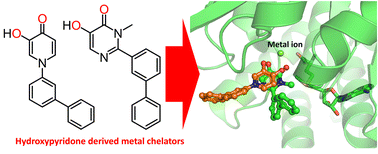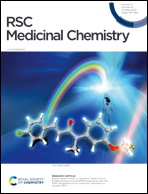Hydroxypyrone derivatives in drug discovery: from chelation therapy to rational design of metalloenzyme inhibitors
Abstract
The versatile structural motif of hydroxypyrone is found in natural products and can be easily converted into hydroxypyridone and hydroxythiopyridone analogues. The favourable toxicity profile and ease of functionalization to access a vast library of compounds make them an ideal structural scaffold for drug design and discovery. This versatile scaffold possesses excellent metal chelating properties that can be exploited for chelation therapy in clinics. Deferiprone [1,2-dimethyl-3-hydroxy-4(1H)-one] was the first orally active chelator to treat iron overload in thalassemia major. Metal complexes of hydroxy-(thio)pyr(id)ones have been investigated as magnetic resonance imaging contrast agents, and anticancer and antidiabetic agents. In recent years, this compound class has demonstrated potential in discovering and developing metalloenzyme inhibitors. This review article summarizes recent literature on hydroxy-(thio)pyr(id)ones as inhibitors for metalloenzymes such as histone deacetylases, tyrosinase and metallo-β-lactamase. Different approaches to the design of hydroxy-(thio)pyr(id)ones and their biological properties against selected metalloenzymes are discussed.

- This article is part of the themed collection: Emerging Investigators


 Please wait while we load your content...
Please wait while we load your content...